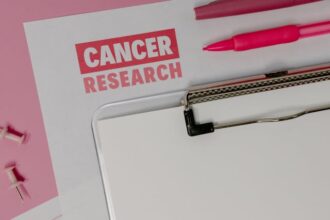Muscle strengthening exercises, such as weightlifting or using one’s body weight, may be the optimal type of exercise for addressing insomnia in older adults, according to a comprehensive analysis of existing research published in the open-access journal Family Medicine and Community Health. This research suggests that aerobic exercises or a combination of strength, aerobic, balance, and flexibility training can improve sleep quality. Sleep quality typically deteriorates with age, and up to one in five older adults suffers from insomnia. This condition is not only associated with various severe health issues and cognitive decline but also increases the risk of workplace underperformance and absenteeism, the researchers highlight.
Previous studies have demonstrated that physical exercise can mitigate insomnia symptoms, although it has been unclear which type of exercise is most beneficial. To clarify this, the researchers reviewed clinical trials from research databases until October 202. These trials compared physical exercise against routine activities, usual care, other non-physical interventions, or health education among individuals formally diagnosed with insomnia, assessed using The Global Pittsburgh Sleep Quality Index (GPSQI).
The studies examined various forms of exercise: aerobic activities like cycling, dancing, swimming, brisk walking, and gardening; resistance exercises such as using weights, performing push-ups, and planks; balance exercises including step-ups and walking heel to toe; flexibility exercises like gymnastics, yoga, and Pilates; and a combination of these exercises. A total of 24 studies involving 2045 participants aged 60 and above (average age 70) were included in the pooled data analysis. These studies were predominantly conducted in Asia (56%), followed by North America (16%), South America (16%), and Europe (12%), with one in five taking place in nursing homes.
The intensity of the exercise reported in these studies ranged from mild to moderate, with the average session lasting just over 50 minutes and occurring about 2 to 3 times a week. The exercise programmes typically spanned around 14 weeks. However, the pooled data analysis focused only on studies involving combination and aerobic exercises due to insufficient data covering other types of exercises.
This analysis revealed that combination exercises improved the GPSQI by 2.35 points, while aerobic activities significantly improved by 4.35 points. Using a network meta-analysis, which combines the direct and indirect effects of different treatments, it was found that strength/resistance exercise was the most effective, enhancing the GPSQI by 5.75 points. Aerobic exercises improved the GPSQI by 3.76 points and combination exercises by 2.54 points.
Compared to other interventions, sleep education was found to be the most effective; however, its precise methods were not well-defined in the studies, and it was still less effective than muscle strengthening or resistance exercises. The researchers note considerable variations in the design and methodology of the studies included, with many not specifying the intensity of the exercises or focusing solely on certain types of exercises. They also highlight that some exercises might be challenging for older adults due to physical limitations.
Despite these challenges, the researchers conclude that exercise, especially strengthening and aerobic exercises, significantly enhances subjective sleep quality compared to normal activities. This conclusion supports the notion that targeted physical activities, specifically tailored for the elderly, can significantly alleviate the burden of insomnia and improve overall health and quality of life in this population.
More information: Pakwan Bahalayothin et al, Impact of different types of physical exercise on sleep quality in older population with insomnia: a systematic review and network meta-analysis of randomised controlled trials, Family Medicine and Community Health. DOI: 10.1136/fmch-2024-003056
Journal information: Family Medicine and Community Health Provided by BMJ Group








